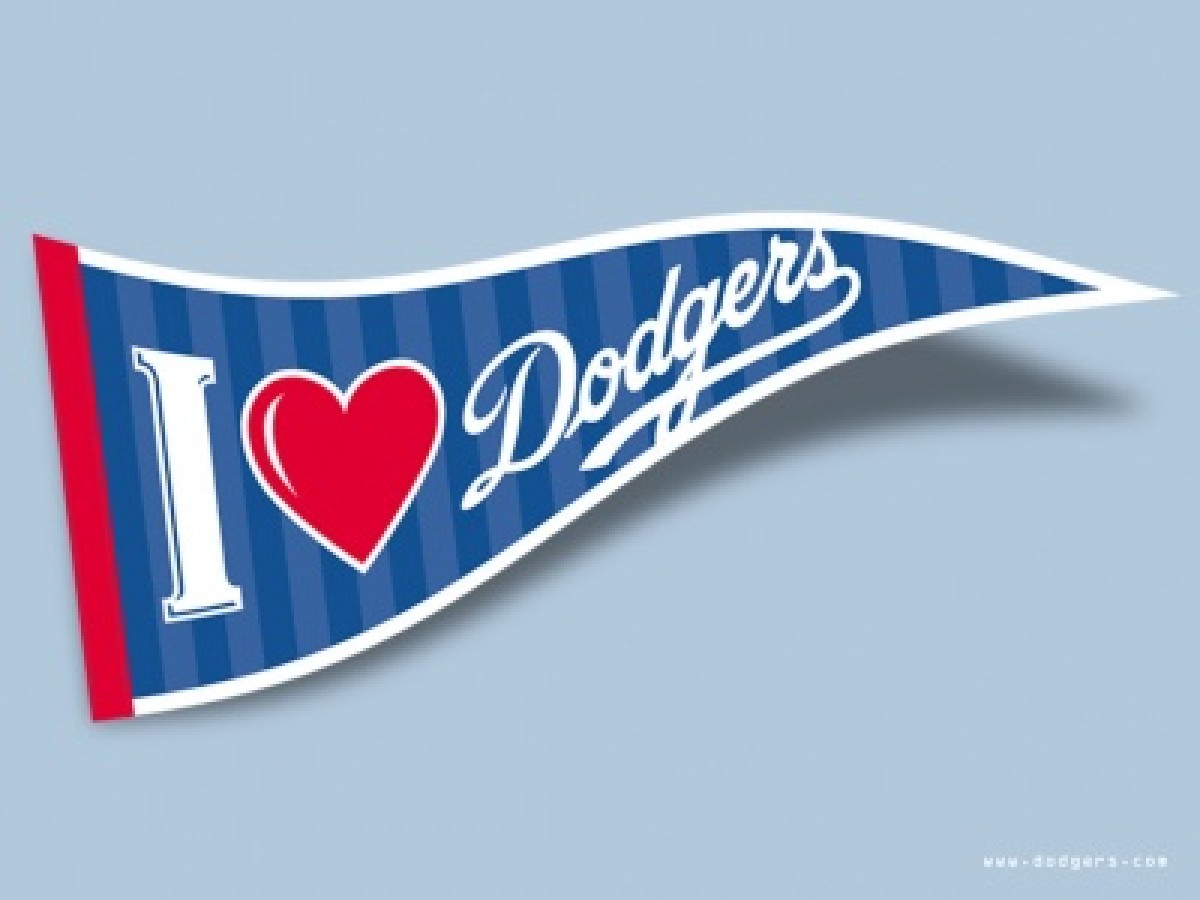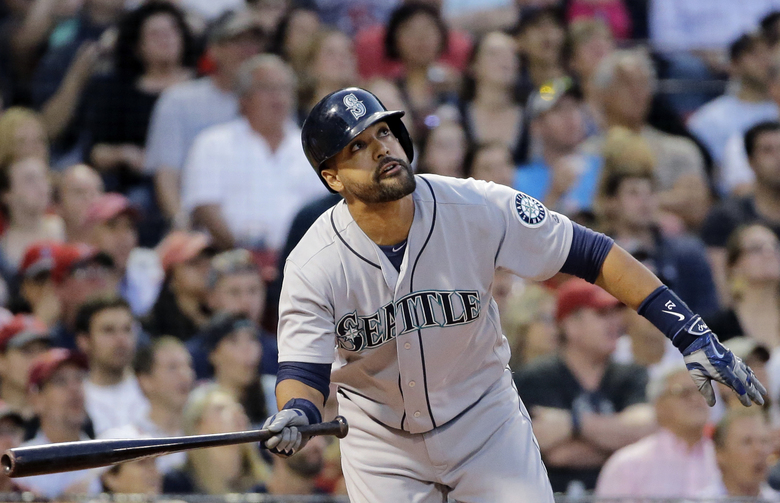The Dodgers organization and fan base are saddened by the recent death of former National League Rookie of the Year Wally Moon, who died at his home in Bryan, Texas on Friday Night. The left-handed outfielder played his 12-year career in the major leagues for both the St. Louis Cardinals (1954-58) and Los Angeles Dodgers (1959-65).
Moon grew up in a family of educators, earning his Master’s degree in administrative education from Texas A&M University in College Station, while he was in the minor leagues. He was one of the very few baseball athletes who was talented both on the field and academically. Had he not made it to the Cardinal’s Opening Day roster, he was going to return back to his native Arkansas and take a teaching job. He empowered young men and helped them grow as individuals.
Wally Moon‘s Baseball Career
Moon was instructed to report to minor league training camp in the spring of 1954 but refused. He was insistent on going to St.Petersburg with the Cardinals. It allowed him to determine whether he was fit for baseball or not. He impressed the Cardinals. As a result, they let him stay, trading away outfielder Enos Slaughter to the New York Yankees. This opened up a roster spot and starting center fielder position for Moon. The Cardinals will never forget to this day.
In his major league debut, neglecting chants of “We want Enos”, Moon immediately silenced his critics. He belted a home run against the Chicago Cubs and his rookie campaign never spiraled from there. Though his power would take a slight dip, Moon possessed great hitting fundamentals that allowed him to finish his rookie season strong. He finished with a .304 batting average, 12 home runs, 76 runs batted in (RBI’s), and career-highs in hits, runs, and stolen bases. These numbers paved the way towards the National League Rookie of the Year Award. His success was steady for the next three seasons with the Redbirds, improving his plate approach against left-handed pitching and attaining a career-high 24 home runs.
Unfortunately, Moon’s 1958 season was one to forget. He collided with left-fielder Joe Cunningham in pursuit of a fly ball, sustaining an elbow injury that impacted Moon offensively. Missing some time, he wasn’t able to return as the same hitter and appeared to have a different batting stroke. His numbers plummeted significantly, producing a batting average of .238 and a bleak 38 RBI’s. The Cardinals placed the blame on Moon and traded him to the Los Angeles Dodgers for outfielder Gino Cimoli.
The news devastated Moon. Moon’s family lived in the St.Louis area but he knew it was important to move on. The Dodgers made him the team’s starting center fielder and he had a cannon for an arm. He had the ability to throw out runners that appeared to have easy doubles and always took the right angle on line-drives and pop flys.
Moon was truly a great all-around player for the Dodgers. He made the adjustment in his batting approach, innovating ways to poke the ball over the 251 foot left field fence at the Coliseum, which featured a 42-foot high screen. His consistent practice and work with his inside-out swing earned him the name “Wrong Way Wally” because of the unique opposite field stroke. However, he was hitting home-runs game after game over this fence, later becoming known as “moon shots.”
Although it wasn’t Giancarlo Stanton power, he did what was necessary to get it over the fence. He batted .302, hit 19 home runs, and was fourth in the MVP race. He was instrumental in helping the Dodgers win their first World Series in Los Angeles. Also, he remained effective for the rest of his tenure.
Rest In Peace Wally!





One little change there Johnny. Wally played left field for most of his tenure as a Dodger. Duke Snider and Don Demeter played CF most of the time in 59. When Tommy Davis arrived in 62 Wally was more the swing man. Howard was in RF. Willie Davis was the primary CF from 1961 on. Moon in his entire Dodger career only played CF 6 times. I remember going to a game at the coliseum and sitting behind the LF screen and Wally was playing Left. He would say hi to us every time he came out to his position. Was a consummate pro.
I saw 2 Moon shots in person. I usually sat on the first base side. As I told you my grandpa got celebrity seats. I was spoiled. There were seats in the Coliseum where the seagulls were flying below you. Sat on the third base side once and hated it. 3rd base looked 100 yards away.
I remember in ‘59 when Vin was talking about a nickname for Demeter. He decided “Speedemeter” was the best one he heard but it didn’t stick. I also remember when Wills first came up. He wasn’t all that his first year, age 26, which was apparently old for a first year player. Koufax had been in the league 8 years by 26. Wills got it figured out by year 2. I had the privilege of having lunch with him once. Very nice guy.
I was in foster care by the time the Dodgers moved to LA. So we sat where the knothole gang was which was way down the RF line past the fence. The players looked like ants from out there and unless you were listening to Vin and Jerry on your radio, you had no clue what was going on except when the cheering would break out. I did see a big fight there once between the Cardinals and Dodgers. Big D plunked Joe Cunningham in the ribs. Solly Hemus, the Cards skipper went out to see how his 1st baseman was doing. When he headed back to the Cardinals dugout, which was on the 3rd base side, he said something to Big D and Drysdale went after him. Both benches emptied and the melee was on. I saw Moon hit two homers there also. 1 in 59 and the other in 61. I also remember going to Wrigley Field in LA to see the Angels play Detroit. That was in 1961. You were a lot closer to the action and the Field only held 22,000. Vic Wertz, who hit the ball that Mays caught in CF during the 1954 series was with the Tigers. He blasted a ball clean out of the ball park. I remember that Albie Pearson was playing CF. He was 5’4″. Angels had former Giant Leon “Daddy Wags” Wagner playing RF. They got crushed 9-3. You were right about Maury. He was called up because Zimmer was so bad that year. Reese had retired. Maury hit .260 and was 7-10 in stolen bases, but he bought speed to the team which was made up of grizzled old veterans and some youngsters. Maury turned 27 during the series. They called up Roger Craig and Larry Sherry. Craig won 7 games down the stretch and Sherry became the closer. Wills played 10 of his 12 seasons with LA. He did 2 years in Pittsburgh and then was in Montreal for 47 games in 69 before he was traded back to LA and played for the Dodgers until he retired in 1972 after the season. Only in 59 and 72 did he play less than 100 games as a Dodger. He hit .281 over his career and stole 586 bases. Was the MVP in 1962. Loved watching him play.
Darvish says his main goal is to help the Cubs beat the Dodgers…..seems to me he helped the Astros beat the Dodgers…….
Michael
To tell you the truth, Darvish didn’t look very happy at his conference, when he signed with the Cubs.
I still think Darvish’s heart, is still in LA.
McCutchen told Giant fans, he likes to take it to the Dodgers, when he is in LA.
He has good overall numbers against the Dodgers, except for last year.
Question for the veterans:
I never saw the Dodgers play in the Colosseum.
Was the entire outfield wall a screen or was there also a traditional wall? In other words if Wally Moon went back on a fly ball and leaped to catch it what would he have crashed into, a wall or a screen?
Artie:
https://youtu.be/2U7v4YeyZcY
There was a screen that stretched from the LF foul pole to left center field. The screen was 251 feet from home plate straight down the line. The power alley in Left center was 320 feet. From left center to the RF line was an 8 foot high fence. The screen was 42 feet high. The RF line was 395 feet at the foul pole. One huge reason Duke Snider’s run of 5 consecutive years with 40 or more homers ended. The fence was not made of solid material, it was wire. There was a little padding on the top. Moon, playing left would have hit the screen if he jumped for a ball. But Wally was able to learn how the ball came off the screen and hold a lot of players to singles rather than doubles. What is amazing is that the HR totals at the coliseum dropped each year the Dodgers were there. It did not at first seem like that would happen as there were 24 HR’s hit there the first week. But pitchers got smart fast and started pitching away from RH hitters power. The Dodgers had lost one of their better RH hitters when Campy was injured in the car wreck. Furillo was also injured and Hodges was the only pure power from the right side. Neal picked up some of the slack and he and Hodges led the team with 22 HR’s. Snider only hit 15. Furillo hit 18 in 58 and Roseboro hit 14 and Zimmer 17. The Dodgers used a bunch of players in 1958 including guys like Steve Bilko, Elmer Valo, Dick Gray, Gino Cimoli, who was traded that winter for Wally Moon, Jim Gentile, who would be traded to Baltimore and become a star there, Norm Larker, Pee Wee Reese was playing his last games as a Dodger and became a coach in 59. Ron Fairly, Don Demeter, and Frank Howard played a few games late in the season. Rube Walker was also in his final Dodger season as Joe Pignatano arrived to be Roseboro’s back up. Don Newcombe and Carl Erskine were on their final legs as Dodgers. Newcombe was traded to the Reds and Erskine retired in 1959. They finished in 7th place. Only 8 teams in each league back then. The next year they would win the World Series with the last vestiges of the Brooklyn team and a lot of new blood leading the way. Hodges went to the Mets in the expansion draft, Snider was traded to the Mets after the 62 season. Pitching became the LA Dodgers trademark as Sandy and Don led the way. In 62 they moved into Dodger Stadium. In 1958 the Dodgers had exactly 1 PH HR all year. It was hit by Rube Walker.
A J Ellis signs minor league deal with the Padres. Andrew Cashner signs 2 year pact with the Orioles….Utley’s deal is for 2 years. Today is the Penguins 70th birthday..